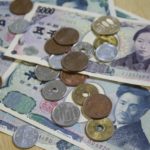Leverage is a concept in online trading and is used both by brokerage companies and investors. Investors typically use leverage to increase their trading capital way beyond their available balance, which enables them to significantly boost their returns from successful trades.
Leverage is available when trading with different asset classes, including currency pairs, commodities, stocks, indices, and cryptocurrencies. Options and futures can also be traded with leverage. With that in mind, traders also need to be aware of the fact that leverage can have adverse consequences for their balance.
It has the potential to significantly boost their profits but the same applies to the losses they could suffer from unsuccessful trades. Leveraging your positions is not necessarily a guarantee for trading success. Due to this, one should exercise great caution when using excessive leverage ratios like 200:1. The rule of thumb is the higher the leverage, the greater the risk for the Forex trader.
What is Leverage?
Leverage is, in essence, borrowed capital that enables investors to open positions that are bigger than the available balance of their trading accounts. Leverage varies between brokers and asset classes and is presented in the form of ratios like 2:1, 5:1, 50:1, 100:1, 200:1 or 500:1.
There are two types of leverage, operating and financial. Operating leverage is used to measure to what extent a company can grow its operating earnings by increasing its revenue. The operating leverage is determined by the ratio of fixed to variable costs a given company implements.
A company uses higher operating leverage when it has more fixed than variable costs. And vice versa, when the variable costs exceed the fixed costs, the company is said to utilize lower operating leverage.
There is also financial leverage, which refers to using debt to purchase assets. If an investment is said to be highly leveraged, this means it has less equity than debt. In the context of trading, leverage enables investors to increase their purchasing power by controlling bigger amounts in a given market with less capital.
This practice is called trading on margin and is available to both retail and professional investors. Trading on margin is interest-free in foreign exchange trading. One obvious benefit of financial leverage is that it allows you to realize significant earnings from a relatively small investment.
It also gives traders more exposure to the financial markets. Using a leverage ratio of 200:1, for example, gives a trader the ability to enter a trade of $200 for every dollar they have available in their live account’s balance.
In short, you can trade with 200 times more money than what you have. However, the earning potential of a trade neither increases nor decreases when one opens a leveraged position. Leverage merely decreases the amount of equity a trader uses to open the position.
Since leverage is a capital you borrow from your Forex broker, you can incur substantial debts if you lose a position. Many traders describe leverage as a double-edge sword because it can greatly magnify your losses as well as your profits. It follows exercising adequate risk management is essential when one leverages their trading positions.
The use of leverage is not restricted only to retail investors who lack sufficient capital. On the contrary, professional investors also trade on margin but would normally utilize low leverage ratios such as 20:1 or 10:1. This helps them maintain consistent profits and protects their capital from trading mistakes and unexpected market movements in an unfavorable direction.
Leverage and Margin
Another important thing to keep in mind is that leverage and margin are two interrelated concepts. The leverage reflects the ratio between the amount of available funds a trader has in their balance and the amount of capital they can trade with.
Margin reflects the funds you need to actually have in your live balance to open a leveraged position with a broker. The brokerage uses margin to maintain your open position. Margin is typically presented in the form of percentages that represent the full amount of a trade, such as 2%, 1%, 0.5%, 0.25% or 5%.
The required margin is based on the size of the trader’s position and the financial instrument they invest in. the relationship between margin and leverage is inversely proportional as is reflected by the following two formulas:
- 1 / Margin = Leverage. If the margin required by a broker is 0.02 or 2%, it follows the maximum leverage in this case will be equal to 1 / 0.02 = 50, or 50:1.
- 1 / Leverage = Margin. Respectively, a leverage ratio of 200:1 would yield a margin of 1 / 200 = 0.005, which when expressed in the form of a percentage amounts to 0.5%.
Used margin is another important concept Forex traders must familiarize themselves with. It reflects the amount of funds the broker must lock up in your trading account to maintain the positions you currently have. There is also usable margin which represents the overall available amount you have in your balance to open new positions.
The funds are practically still yours while the position remains open. However, it is impossible for you to withdraw them from your balance until your brokerage “unlocks” them from your account. This happens either when you close the leveraged position or when the broker sends you a margin call, something we shall tackle in the next section.
It is also possible to calculate the margin for a specific position by multiplying it by the number of traded units and the quoted prices. For example, you want to open a long position for the EUR/USD pair and purchase 10,000 units of the EUR currency. The brokerage firm requires a margin of 0.5%, which is commonly the case for leverage ratios of 200:1.
The price for this pair quoted by the broker is 1.09, which is to say you must pay $1.09 for each EUR you purchase. Therefore, the required margin will be equal to 10,000 EUR x 1.09 x 0.5 = $5,450. Suppose you had $6,000 in your available balance before you opened this position. If so, your remaining equity would amount to $6,000 – $5,450 = $550.
Margin Calls – Why and When Do They Occur?
Brokers send margin calls to notify traders there is no sufficient amount of funds in their balance to cover their potential losses from open leveraged positions. This occurs when a trader’s equity drops below their used margin.
By sending you a margin call, the broker demands you to transfer extra money to your balance so that your account can return to the minimum maintenance margin. If you fail to do this, the broker will close your open positions to prevent your balance from dropping even further.
It is important to point out a trader’s usable margin is determined by their remaining equity rather than their balance. As long as the trader’s equity exceeds their used margin, the broker will not send them a margin call. A margin call occurs as soon as the trader’s equity equals or drops below their used margin.
How Leverage Works in Forex Trading
Foreign exchange traders rely on leverage to expand their initial investments and trade larger volumes of currencies with borrowed money. Using leverage is a widespread phenomenon in the Forex community because the currency markets generally offer some of the highest leverage ratios investors can hope for. Currency traders can sometimes benefit from leverages as high as 200:1 or even 500:1 for major Forex pairs like GBP/USD, EUR/USD, and GBP/EUR.
This borrowed capital in the form of leverage is provided to traders by the brokers that handle their live accounts. To use leverage when trading currency pairs, the trader must first sign up for a margin account, preferably with a reliable and regulated brokerage firm.
Most brokers typically offer higher leverage ratios for major currency pairs and lower ratios for exotics and minors. Some of the most common ratios for majors are 30:1, 50:1, 100:1, and 200:1. The ratios depend on where the broker is regulated as well as on the size of the trader’s position.
From a regulatory perspective, leverage is often proportionate to market volatility. The more volatile a given market is, the lower the leverage the broker will offer. It is for this reason cryptocurrency positions can usually be leveraged at a ratio of no more than 2:1 or 5:1 as opposed to the 100:1 and 200:1 leverages offered for major currency pairs in some cases. Trading indices is rarely available with leverage of more than 20:1.
Forex traders love to leverage their positions because this enables them to increase both the size of their trades and their potential earnings. Suppose a person has deposited $1,000 into their Forex account but wants to open a position that exceeds this amount.
If their broker supplies leverage of 200:1, this would allow the trader to open a position as a big as 2 lots, with one standard lot amounting to $100,000. The trader will extend their initial investment from $1,000 to $200,000 for this position with a leverage of 200:1, or two standard lots of $100,000 each. This way, the person can trade up to $200 for every dollar of equity they have available in their account.
A leverage ratio of 200:1 is often offered to traders with mini accounts where mini lots are traded. One mini lot is equal to 10,000 units of the base currency, or USD in this case. Sometimes leverage can depend on your account’s deposit level. For instance, some trading sites may offer a 500:1 leverage for deposits under $1,000 and a ratio of 200:1 for deposits ranging from $1,000 to $5,000.
Is 200:1 Leverage Suitable for You?
It is essential to specify that high leverage ratios like 500:1, 100:1 or 200:1 are neither suitable for nor available to all traders. Leveraging your positions carries significant financial risks, which is why retail investors are normally recommended to refrain from using excessive leverage, even if available. If a trader is not competent or careful enough, they might end up incurring massive losses.
The leverage ratio you use should be proportionate to your risk tolerance. The trading strategy you implement also plays a role in what leverage works best for you. The rule of thumb is to use lower leverage if you intend to hold your positions open for a longer period.
By contrast, when you have a short-term position that would remain open for minutes or seconds only, you are looking to extract maximum earnings from it within a very short time. In this case, you will want to use as much leverage as possible to ensure you generate high profits from minuscule market fluctuations.
It is for this reason that high leverage ratios like 200:1 are usually used by scalpers and traders who rely on price breakouts. Position traders, on the other hand, usually utilize low leverage (with the ratios ranging between 5:1 and 20:1) or use no leverage at all. By means of comparison, scalpers typically employ leverage from 50:1 to 500:1.
Maximum leverage restrictions vary wildly between different jurisdictions. In some countries like Belgium, trading on margin and leveraging your positions is prohibited by law. The Belgian Financial Services and Markets Authority (FSMA) outlawed the distribution of leveraged OTC derivatives to local retail customers in 2016.
Also important is to mention that trading with leverage of 200:1 would be impossible if you are based in a member state of the European Union, at least if you want to trade with an EU-regulated brokerage.
The European Securities and Markets Authority (ESMA) has proposed the following leverage ratios – 30:1 for major Forex pairs, 20:1 for minor/exotic pairs, major indices, and gold, 10:1 for other commodities and equity indices, 5:1 for individual equities, and 2:1 for cryptocurrency positions. Most EU member states have already adopted the recommended ratios.
Meanwhile, the maximum allowed leverage for retail customers in the United States is 50:1 while that in Japan is restricted to 25:1. If you live in any of these countries but want to trade with a 200:1 leverage, you will have no other option but to register with a foreign broker, licensed in another jurisdiction that allows for higher leverage caps.
Advantages and Disadvantages of Using 200:1 Leverage
The most obvious advantage of using such high leverage is that it helps you extend your trading volume way beyond your available capital and gain greater exposure in the markets. A smart and competent trader can accomplish a lot by leveraging their positions.
With a leverage of 200:1, you can increase your investment 200 times. The same goes for the profits you generate from successful trades, which also get magnified thanks to leverage. Leverage gives you access to significant capital you can use to trade Forex currency pairs.
You can generate additional earnings from assets you would not be able to afford without this financial injection. Leverage multiplies the value of each dollar of your own capital you invest in the Forex markets.
With that in mind, there are inevitably two sides to every story and using leverage is not an exception. Leverage allows you to control significant capital you practically do not own. It amplifies your profits but the same goes for your losses.
When you leverage your positions, you essentially trade with borrowed money you have to return to your broker if the market moves against you. The reality is the majority of retail investors who trade on margin lose their money, with the percentage of leverage victims ranging between 60% and 90% across different brokerages.
To prevent incurring huge debts, you should always ensure the broker you trade with offers negative balance protection. This will safeguard you in case your balance goes in the red after a stop out, preventing you from losing more than you have deposited. Your account will be automatically reset to zero in one such scenario when negative balance protection is in place.





